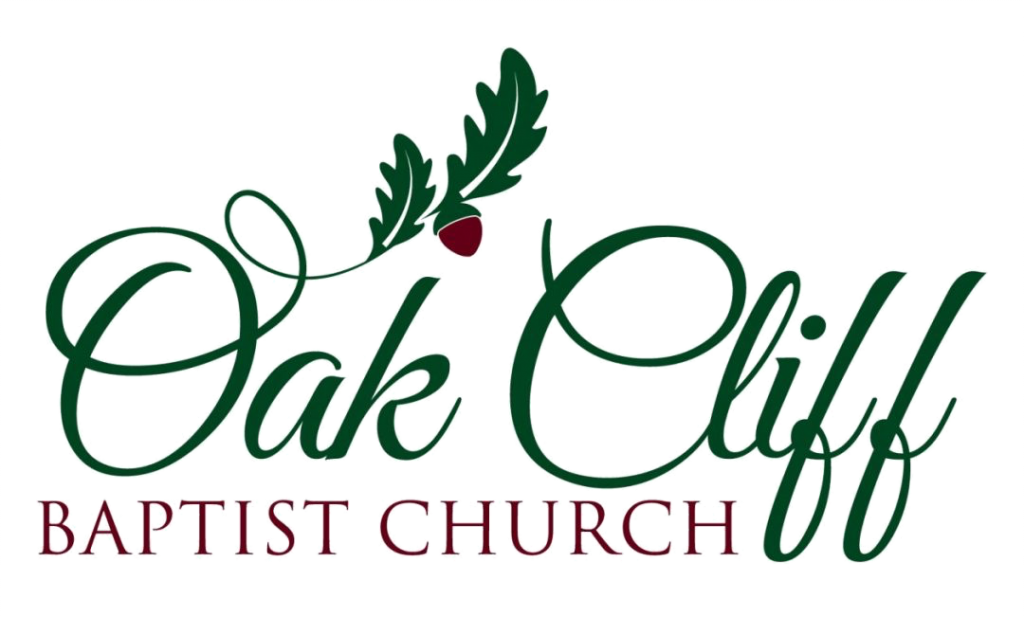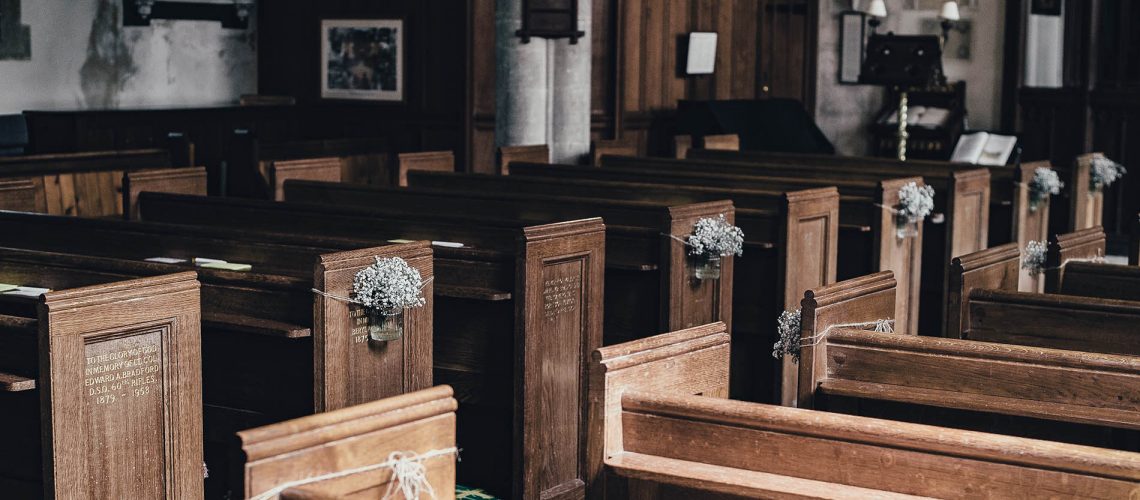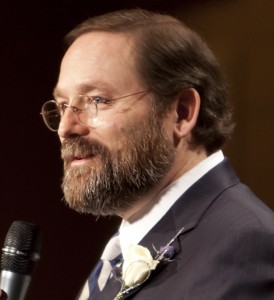Worship is at the very center of what we do as a church. Yet worship has also been at the center of controversy for the past several decades. At some point, the evangelical church as a whole began to move away from what we call “classic” worship, which included the singing of hymns accompanied by a piano, organ or some other simple instrument, to “contemporary” worship, which includes praise teams, rock bands, simple choruses and other components. The move from one type of worship to the other created no small controversy in the evangelical church. For many, the defense for such change includes arguments like: We have to appeal to the world on its level in order to reach the world; or worship is only a matter of personal taste or style, so it should be no big deal. What many seem even today to fail to realize is that such a dramatic change in worship reflects not only what we might think of as personal taste or style, but it fundamentally involves a major shift in a church’s theology of worship and ministry.
At Oak Cliff, we maintain “classic” worship. We also maintain what some would label a “classic” philosophy of ministry. There are, I am convinced, sound biblical reasons for so doing.
A Southern Baptist pastor and professor recently wrote an article that I think addresses the topic in a very thoughtful and biblical way. So I am sharing it for all our benefit. The article is titled: “What We Lost When We Left Classic Worship and Ministry Behind.” It is by Dr. Howell Burkhead. What follows is the text of Dr. Burkhead’s article.
Classic worship and ministry is dead. In one or two generations, a way of doing church that had endured and developed over decades . . . even centuries . . . has been dropped, dumped, and forgotten. The change has left no element of evangelical life the same. The shape and style of Sunday (worship) and the methodology of the week (outreach and missions) have been radically transformed.
The change is most obvious in Sunday worship. Familiar hymns are no longer sung to the accompaniment of pianos or organs. Choirs singing in four-part harmony do not exist. Music directors have been replaced by multiple singers collectively known as the “praise team.” Preachers no longer dress in suits. If they are not clad in t-shirts and faded jeans, they wear pleated slacks and golf shirts. In no case do they wear ties. The hymn book has disappeared as has, in most cases, the printed order of worship. Screens dispense chorus lyrics and any pertinent church information the congregation needs.
Many changes have taken place in other areas of the church’s life as well. Some of these changes are superficial; some represent fundamental changes in how the church sees itself and views its mission. The key similarity in all the changes in contemporary church life is that they are complete. Classic worship and ministry is gone, and will not be back.
But as we rush rapidly forward, deeper and deeper into the new millennium, could we not take a quick glancing look into the church’s rear-view mirror and reflect upon the results of this tectonic church shift? I believe we lost some very important things when we left classic worship and ministry behind.
The loss of classic hymns as a way of teaching doctrine. Like them or not, the historic hymns of the church . . . hundreds in number . . . were filled to overflowing with all the doctrines of the Bible loved, believed and taught by the church. Most of the hymns (there were some exceptions) taught some aspect of the doctrine espoused by the Christian people assembled. As the people sang these hymns, some one Sunday and more on another Sunday, over a period of time the doctrinal truths they contained lodged themselves into both the hearts and minds of the singers. Consciously or subconsciously, these nuggets of Christian truth became part of the being of the worshippers.
An excellent example is the hymn “One Day.” This hymn is, from beginning to end, a virtual and thorough recitation and explication of the doctrine of the Person of Jesus Christ.
One day when heaven was filled with His praises
One day when sin was as black as could be
Jesus came forth to be born of a virgin;
Dwelt among men, my example is He!
One day they led Him up Calvary’s mountain
One day they nailed Him to die on the tree.
Suffering anguish; despised and rejected
Bearing my sins, my Redeemer is He!
One day they left Him alone in the garden . . .
One day He rested, from suffering free.
Angels came down o’er His tomb to keep vigil;
Hope of the hopeless, my Savior is He!
One day the grave could conceal Him no longer.
One day the stone rolled away from the door.
Then He arose, over death He had conquered;
Now is ascended . . . my Lord evermore!
One day the trumpet will sound for His coming!
One day, the skies with His glories will shine;
Wonderful day, my beloved ones bringing . . .
Glorious Savior, this Jesus is mine!
By singing one song, worshippers learned and affirmed every key aspect of the doctrine of Jesus: His eternal pre-existence, His virgin birth, His sinless, exemplary life, His sacrificial death, His glorious resurrection, His ascension to heaven, and His promised return.
Then the chorus reaffirms these truths in brief:
Living, He loved me; dying, He saved me;
Buried, He carried my sins far away!
Rising, He justified freely forever:
One day He’s coming . . . Oh, glorious day!
Children, singing songs like this, asked their parents what these words meant. Alone at play, they heard the words go around in their heads. They learned the doctrine of Christ! Adults had the truth planted deep inside, and the words often came into their thoughts throughout each day as well. The stirring music and the depth of the theology took root . . . even subconsciously!
Another hymn, now almost forgotten, was a thorough exposition of the doctrine of salvation. The title was “I Know Whom I Have Believed.”
I know not why God’s wondrous grace to me He hath made known,
Nor why, unworthy, Christ in love redeemed me for His own.
I know not how this saving faith to me He did impart,
Nor how believing in His Word wrought peace within my heart.
I know not how the Spirit moves, convincing souls of sin,
Revealing Jesus through His Word, creating faith in Him.
I know not when my Lord may come, at night or noonday fair,
Nor if I’ll walk the vale with Him, or meet Him in the air.
These four verses honestly express the lack of full understanding with which every believer struggles. Then, in response, the chorus affirms the faith necessary to leap the gap.
But I know Whom I have believed! And I am persuaded that He is able
To keep that which I’ve committed unto Him against that day.
Again, as believers sang this hymn in the company of other believers, they strengthened their own hearts in the knowledge that God has provided a wonderful salvation, and they affirmed each component element of that salvation.
Some of the classic hymns were more devotional than doctrine, although even these contained large doses of theology. “Blessed Assurance, Jesus is Mine” is a good example. “Have Faith in God” is another. These hymns filled their singers with biblical and detailed reassurances of the Lord’s promises to protect them and His power to keep them.
Other hymns repeated, in detail, biblical teaching about relations between Christians, the Christian’s role in the church, and the Christian in relation to those outside the faith. Again, they were full of rich content.
There were those, in the early days of the “get rid of the hymns” movement, who said: “We should sing songs to God rather than songs about God.” The exact reason for this sentiment was never adequately explained, but a careful examination of historic hymns shows a strong mix of hymns to God. “Savior, Like a Shepherd Lead Us” is one. “My Jesus, I Love Thee” is another. “God of Grace and God of Glory,” and “Come, Thou Fount of Every Blessing” and “Holy, Holy, Holy” and “Great is Thy Faithfulness” are a few more. These not only enable the worshipper to sing to God, but also include rich content about God . . . which, again, helps establish biblical truth in the heart and mind.
Another statement made in support of the new musical style in worship was: “The Bible says, ‘Sing unto the Lord a new song.’” By this rationale, no praise chorus should be sung more than once! Brand-new music should be composed for every new worship event! Actually, a careful examination of the psalm referenced seems to suggest that the spirit of the worshipper should be renewed each time a song of praise is sung.
An informative, although overwhelming, exercise would be to go through a hymn book (if you can find one) and read the lines of all the hymns. While I do not seriously think anyone would do this, such a search would reveal an incredibly vast storehouse of thorough Bible doctrine.
It won’t be long before most of the hymns are forgotten. One or two lines from one or two or three hymns may remain, but not much more than that. And when we have finally lost the great hymns, we will have lost a very powerful method of teaching doctrine in the church.
The loss of formal dress in the pulpit and on the altar as a means of communicating the authority and importance of the preached Word. The demise of hymns is the most noticeable, obvious and far-reaching worship change in contemporary church life. However, there is another change that has important although subtle ramifications. Preachers and other altar personnel no longer dress in formal attire during worship.
What difference does this make? Because of the unspoken message the mode of dress on the center stage of the pulpit gives. When ministers wore suits and ties, that made the definite statement that what is being said and done here is extremely important and will impact your life, and you ought to listen.
If asked, those who wear faded jeans and untucked casual shirts while preaching will say: “My casual dress helps me connect with the people. It makes them feel that I’m ‘one of them.’” The error in this line of reasoning is readily demonstrated by doing one thing: watching the evening network news on television. Broadcasters on national networks and in local markets are always dressed up. Men wear suits. Women wear dresses or dignified pantsuits. If anyone wants to connect with viewers and listeners, it is television personnel. Why do they dress as they do? Because they are trying to communicate the thought that what I am saying is critical and of the utmost value. The only time one sees television news reporters in other than formal dress is when they are reporting from the field, speaking about an accident, a storm, or some other on-location calamity.
If anyone is “in tune with the times,” it is the television industry. When the anchor of NBC Nightly News wears a ragged shirt with one side tucked in and the other hanging loose, this might suggest that those who reject suits and ties are “on the cutting edge.” Until that time, the sense of gravity and importance of the preaching message will be compromised, in a subtle but real way, by a lack of care in dress.
The holiness and majesty of the ministerial office is also diminished by casual dress on the worship platform. If any event should call for the best one has to wear, the Sunday worship event should. Sloppy, unkempt clothing communicates a lack of commitment to the worship event, to preaching, to the concept of the intersection of the human heart’s response and the word of God. In the days of formal dress, everything about the preacher’s appearance spoke of the majesty and criticality of what occurred in the place of worship.
When he was in the White House, President Ronald Reagan refused to ever enter the Oval Office without a dress coat and tie. When asked why, he said: “this is the most sacred office on earth. I must respect it.” His point is informative, but not quite accurate. The most sacred office is the holy desk of the preacher of the Word of God. If a secular leader had such an elevated view of the secular office he occupied, why should pastors look with less respect on theirs?
Recently, at the national convocation of the Southern Baptist Convention, the denomination’s president went out of his way to promote casual dress among the convention messengers and program personnel. He himself presided with an open collar. However, the Vice-President of the United States of America appeared and made a speech. The convention president wore a suit and tie in his presence. Is the office of Vice-President of the United States more important than the office of proclaimer of the Bible?
Once a visitor to the national headquarters of a major insurance company spoke with the Human Resources Director. She was dressed formally. Her guest said: “It’s Friday! Why are you dressed up?” She replied, rather stiffly, “We don’t do ‘casual Friday’ here.” When he asked why, his host said: “Our in-house studies have shown that production and performance drops thirteen percent on ‘casual Friday.’” She then asked, “If you look like you don’t care, will you really care?”
Now that we have abandoned formal dress at the altar and in the pulpit, we have lost a vital means of communicating the truth that what the preacher says is critically important, and a non-verbal but very real way of saying that worship should demand the very best from us.
Altar furniture at the front of the church. Most people probably don’t think much about the placement of the objects on the platform of their church. However, over long periods of time, their position has become a way to silently but powerfully speak to the attendees of church about the worship philosophy of their church.
Some churches place the pulpit to one side of the altar, usually placing it to the congregation’s left. What is front and center, and often elevated above the level of the pulpit, is the communion altar. This placement states that communion, or the Eucharist, or the Lord’s supper is the most important aspect of worship.
Historically, Baptists have placed the pulpit at the center of the altar. This has been done to inaudibly but pointedly say that the church believes that the preaching of the Word of God is should be primary in worship.
Now, many churches have removed the pulpit from the altar altogether. The preacher stands alone there to speak.
What difference does this make? A great deal. What kind of statement does it make? A pulpit in the center and in the primary place of attention says that the Word of God is primary over the individual preaching. Preachers come and go, but the Bible remains as the centerpiece of worship. The removal of pulpits from the church stage subtly but powerfully says that worship is all about the person there.
I know that Word-centered preaching can take place in any number of physical settings. The preacher in a house church may remain seated while preaching. A small group may gather around a dining table, with the preacher sitting at the head of the table. But in a formal church setting, the permanence of the pulpit speaks volumes about the priority of the Bible over the individual expounding it.
The Bottom Line. Most preachers and church members will disagree with the foregoing thoughts. These words will not change anything. The worship wars are over, and contemporary style has won. The only purpose of this article is to suggest that we consider, even as we reject classic worship and ministry, that there were reasons why we did what we did back then. We did not conduct worship in the way we did in a thoughtless manner, nor simply because we did not know better, nor because we had not discovered improved practices. We did what we did deliberately, from a theological perspective, and for what we believed were important reasons.
Those reasons were the teaching of doctrine, the seriousness and criticality of worship, and the timelessness and permanence of the Word in preaching.
These thoughts were not written to suggest that the new way of worship and ministry are invalid, nor to say that good and true worship does not now take place. I am sure many will laugh or become angry when they read these words. I hope not. They were written simply to urge Christians to remember the principles upon which classic worship was based, and take a few moments to consider that we just might have lost something important when we changed styles.


